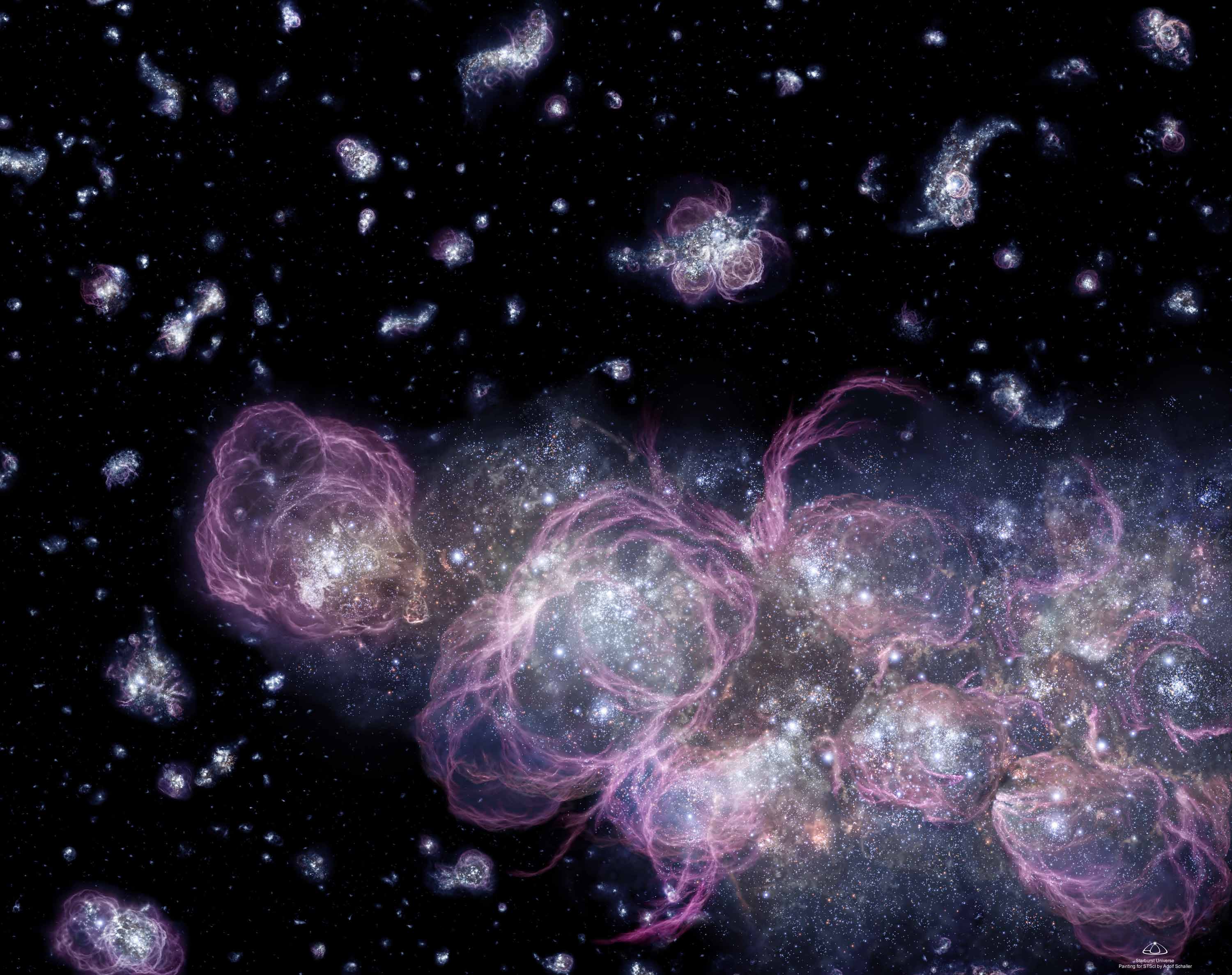Lightning Events Detected from the International Space Station (ISS) 2017-2023
Lightning events detected by the LIS sensor on the ISS between January 2017 and July 2023 using a 10-day roving window. Data is from the quality controlled science dataset. Available resolution in the download menu are 1920x1080, 3840x2160 (4k), and 7680x2160 (created for EIC display).
The Lightning Imaging Sensor (LIS) on the International Space Station (ISS) detects lightning occurring in the Earth’s tropical and mid-latitude regions. The LIS provides datasets consisting of near-real time and non-quality controlled data as well as final quality controlled datasets that are manually reviewed. This data uncovers the variability and distribution of lightning and can be used for storm detection and lightning-atmosphere interaction studies.
This visualization shows the global distribution of lightning strikes between January 2017 and July 2023 using the final quality controlled science dataset. Each data point contains the latitude and longitude of the strike as well as the time it was detected by the LIS. A roving window of 10 days was used to visualize the seasonal patterns of lightning.
Science on a Sphere (SOS) Content
This section contains materials for SOS.
SOS playlist file: playlist.sos
SOS label file: labels.txt
Global lightning events detected by the LIS on the ISS between March 2017 and July 2023. Movie in 4096x2048 resolution for SOS display.

Thumbnail image for SOS.
Credits
Please give credit for this item to:
NASA's Scientific Visualization Studio
-
Visualizers
- Michala Garrison (SSAI)
- Greg Shirah (NASA/GSFC)
- Kel Elkins (USRA)
- Alex Kekesi (Global Science and Technology, Inc.)
Release date
This page was originally published on Thursday, October 19, 2023.
This page was last updated on Friday, March 28, 2025 at 12:14 AM EDT.
Related papers
Blakeslee, Richard J. 2020. Quality Controlled Lightning Imaging Sensor (LIS) on International Space Station (ISS) Science Data [NC 2017-2020]. Dataset available online from the NASA Global Hydrology Resource Center DAAC, Huntsville, Alabama, U.S.A.
Blakeslee, Richard J. 2020. Quality Controlled Lightning Imaging Sensor (LIS) on International Space Station (ISS) Science Data [NC 2017-2020]. Dataset available online from the NASA Global Hydrology Resource Center DAAC, Huntsville, Alabama, U.S.A.
Datasets used
-
CPC (Climate Prediction Center) Cloud Composite
ID: 600Global cloud cover from multiple satellites
See all pages that use this dataset -
Gray Earth (Gray Earth with Shaded Relief, Hypsography, and Flat Water)
ID: 1149This dataset can be found at: https://www.naturalearthdata.com/downloads/10m-raster-data/10m-gray-earth/
See all pages that use this dataset -
International Space Station (ISS) Lightning Imaging Sensor (LIS) (Quality Controlled Lightning Imaging Sensor (LIS) on International Space Station (ISS) Science Data V1) [Lightning Imaging Sensor (LIS)]
ID: 1150The Quality Controlled Lightning Imaging Sensor (LIS) on International Space Station (ISS) Science Data dataset was collected by the LIS instrument mounted on the ISS and are used to detect the distribution and variability of total lightning occurring in the Earth’s tropical and subtropical regions.
This dataset can be found at: https://ghrcdrive.nsstc.nasa.gov/pub/lis/iss/data/science/final/nc/
See all pages that use this dataset -
MCD12C1 (Land Cover Climate Modeling Grid (CMG)) [MODIS]
ID: 1158The Terra and Aqua combined Moderate Resolution Imaging Spectroradiometer (MODIS) Land Cover Climate Modeling Grid (CMG) (MCD12C1) Version 6 data product provides a spatially aggregated and reprojected version of the tiled MCD12Q1 Version 6 data product. The dataset provides global land cover types at yearly intervals using International Geosphere-Biosphere Programme (IGBP), University of Maryland (UMD), and Leaf Area Index (LAI) classification schemes.
Credit: Friedl, M., D. Sulla-Menashe. MCD12C1 MODIS/Terra+Aqua Land Cover Type Yearly L3 Global 0.05Deg CMG V006. 2015, distributed by NASA EOSDIS Land Processes DAAC, https://doi.org/10.5067/MODIS/MCD12C1.006. Accessed 2022-08-25.
This dataset can be found at: https://lpdaac.usgs.gov/products/mcd12c1v006/
See all pages that use this dataset
Note: While we identify the data sets used on this page, we do not store any further details, nor the data sets themselves on our site.
